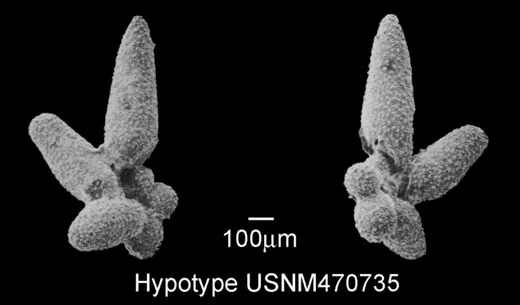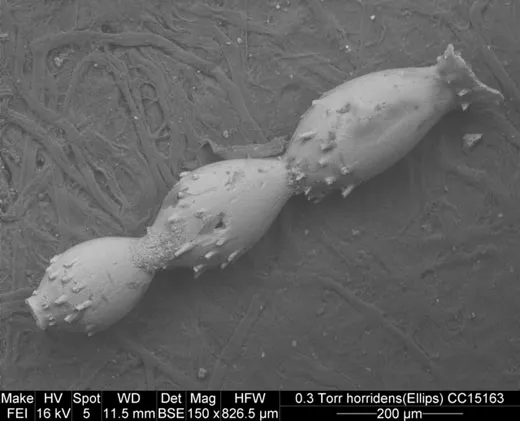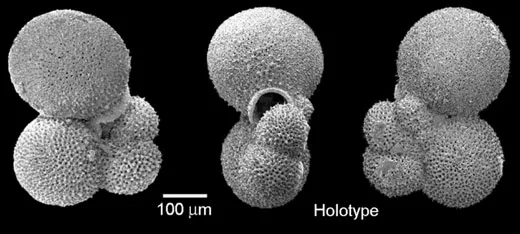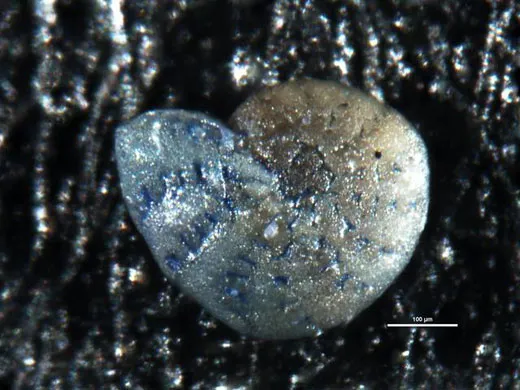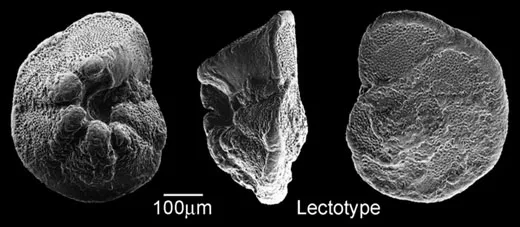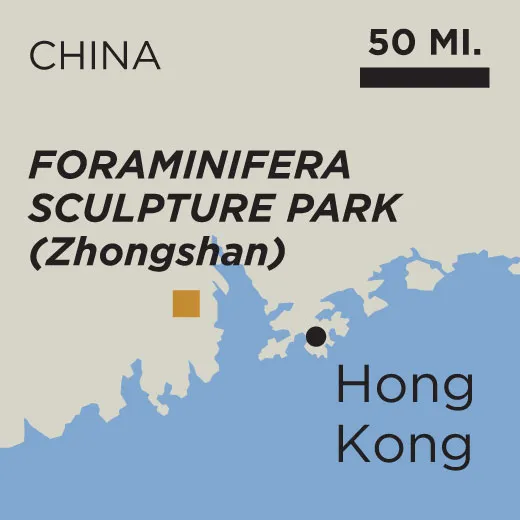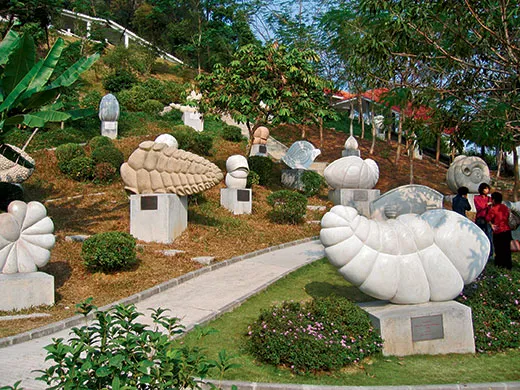Evolution World Tour: Foraminifera Sculpture Park, China
Some of the world’s oldest organisms left behind fossilized shells that, when translated to a large sculpture, bring an artistic edge to evolution
/https://tf-cmsv2-smithsonianmag-media.s3.amazonaws.com/filer/evotourism-Foraminifera-Sculpture-Park-China-631.jpg)
Bilal Haq, a marine geologist at the National Science Foundation in Arlington, Virginia, was visiting a lab in Qingdao, China, where fellow scientist Zheng Shouyi had completed a set of detailed, palm-size models of foraminifera—microscopic marine organisms with ornate shells. “When I saw those,” says Haq, “I said, ‘My God, those would make excellent sculptures.’”
Being a “woman of action,” as Haq describes her, Zheng persuaded the Institute of Oceanology, the Chinese Academy of Sciences and the city government of Zhongshan (Zheng’s ancestral home) to establish a sculpture park devoted to foraminifera, or forams. Local artisans and stoneworkers created the sculptures under Zheng’s supervision. The 2.5-acre park, featuring 114 granite, marble and sandstone sculptures of foraminifera, opened to the public in December 2009. Since then, nearly a million visitors have strolled the hillside grounds, across the bay from Hong Kong.
A tribute to foraminifera was long overdue. The tiny organisms have lived on the planet for 330 million years. Plus, they’re the artisans of the single-celled community—creating their own custom-made skeletons by extracting calcium carbonate from seawater and cementing the particles together with glue secreted by their bodies. Their shells vary from simple tubes and spheres to elaborate, multi-chambered spirals and long, striated pods. Forams “grow based on the same mathematics that the Greeks used in their sculpture and their vases and their architecture,” says Tony Arnold, a paleontologist at Florida State University, “and therefore are pleasing to the eye.”
Numbering more than 4,000 species (and over 40,000 in the fossil record), forams inhabit every ocean, subsisting on microscopic algae, bacteria and detritus, and providing food for snails, crustaceans and small fish. When they die, their shells form layers on the seafloor. Geologists use the deposits to measure the age of surrounding rock and sediment. Other scientists gather the tiny skeletons to study the history of earth’s climate. “They preserve the original carbon and oxygen isotopes of that time, which are a proxy for past temperature,” says Haq.
Moreover, paleontologists recognized these tiny skeletons could provide crucial evidence that had eluded Charles Darwin, who argued that organisms go through intermediate stages on their way to becoming a new species. But Darwin was frustrated that he couldn’t find any examples of these stages in the fossil record; he concluded that nature and time had obliterated them.
But in the 1990s, says Arnold, “several people at once, myself being one of them, realized that the foraminifera, because they live in the deep sea, did have a continuous fossil record, and we could sample layers of them every few centimeters if we wanted to measure the change from one species to another.” In 1997, Arnold and paleontologist Bill Parker, also at Florida State, produced one of the most complete fossil records ever assembled, illustrating the evolution of forams over the past 66 million years.
For display at the sculpture park, Zheng chose both living specimens and those that represent various eras in earth’s history, as far back as the Carboniferous period (about 330 million years ago) and the Jurassic period (beginning 200 million years ago). Her favorite sculptures are based on six specimens from the Holocene epoch (beginning 10,000 years ago) that she herself found in core samples around Zhongshan. They stand near the entrance to the park and remind visitors that, ten millennia earlier, this area was a shallow sea.

